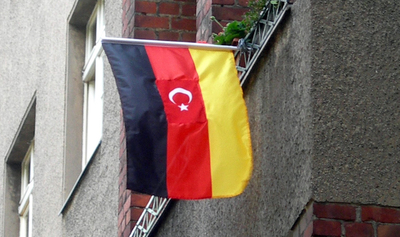The Mundane Origins of Germany’s Huge Turkish Population

by Daniel Pipes
Turkish Labor Minister Ali Naili Erdem visited Turkish “guest workers” (Gastarbeitern) in Germany in 1966. |
In 1961, the German post-war “economic miracle” (Wirtschaftswunder)
was in full bloom, with a seemingly insatiable thirst for unskilled
workers. After signing government-to-government bilateral agreements
with Italy (in 1955), Greece (1960), and Spain (1960), Bonn turned to
Ankara and on this day, Oct. 30, in 1961 signed a “Recruitment Agreement
between the Federal Republic of Germany and Turkey” (Anwerbeabkommen zwischen der Bundesrepublik Deutschland und der Türkei).
Little did either side realize the implications of this seemingly minor accord.The German government set up a liaison office in Istanbul to urge
unmarried male candidates to apply, which they enthusiastically did in
large numbers. The agreement permitted Turks to go to work in Germany
for two years, then return home. But German industry lobbied for longer
residencies – the constant training to replace workers every two years
took its toll – so this limitation was lifted already in 1964. Still, no
one expected the Turks to stay long and their jobs did not require them
to learn German, so the overwhelmingly male population lived in its own
dormitories, quite isolated from the larger society. Of the 750,000
Turks who arrived under this program, about half did return to Turkey,
half did not.
The boom years ended with the oil crisis of 1973-74, which closed
down guest worker recruitment. Ironically, this change led to an
increase in the Turkish population as workers imported wives, moved to
apartments, families burgeoned, and today’s heavily Turkish districts
throughout (former West) Germany came into being.

A blend of the German and Turkish flags that symbolizes what has too rarely occurred. |
Fifty-five years later, with unskilled laborers hardly needed and the
cultural isolation proving a deep problem, the Turkish population
numbers an estimated 4-5 million, making up more than 5 percent of the
country’s total population and by far the largest immigrant group. The
1961 agreement seems from another age entirely, yet its legacy lives on
and grows unceasingly. (October 30, 2016)
http://www.danielpipes.org/blog/2016/10/the-mundane-origins-of-germany-huge-turkish


 Ακολουθήστε το
Ακολουθήστε το